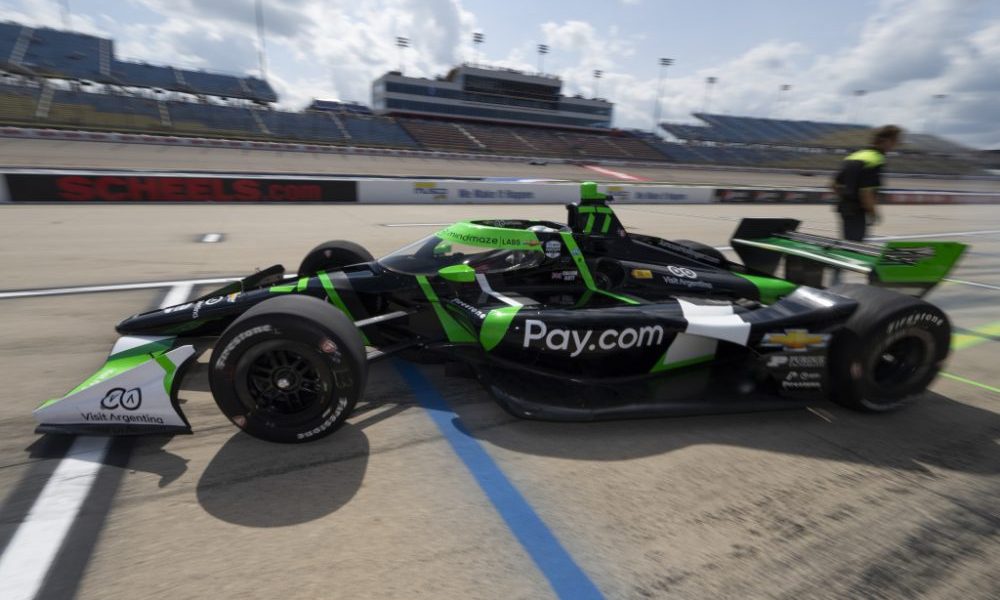With all the Christian Lundgaard- and Josef Newgarden-related fanfare owning last week’s IndyCar news cycle, an important sponsor announcement from Juncos Hollinger Racing flew under the radar.
The fact that Ricardo Juncos and Brad Hollinger signed the online and mobile payment company Pay.com to support its pair of Chevy-powered entries is meaningful, but not for the usual reasons.
[lawrence-auto-related count=3 category=1408]
The significance is found in how IndyCar’s newest team, less than two years after its return late in the 2021 season, has performed at a high level and shown sufficient value to attract its first primary-level sponsor.
Thanks to the belief and investment from Hollinger, the CEO of Vibra Healthcare, the team founded by Argentina’s Ricardo Juncos made its way back to IndyCar with a single entry for British rookie Callum Ilott, and with this year’s addition of Argentinian touring car champion Agustin Canapino to the roster, JHR expanded to two full-time entries.
Both cars have run with JHR’s new stylized logo on the sidepods for most rounds, which signaled the absence of sizable corporate partners to underwrite the majority of the program. It’s here where self-funded teams often falter and shut down after a few years when the willingness to outlay millions of dollars each year can sour if their potential isn’t recognized and rewarded by companies who step in to cover the operating costs through marketing and B2B campaigns.
It’s also here where, for merit-based reasons, JHR has graduated from being the last IndyCar team to largely fund itself to replacing its name on the sidepods with a proper multi-year sponsor.
“It’s a big company, and we have so many good things that we can happen in the future with them because there’s also a big B2B component,” Juncos told RACER. “It’s important, right? This is the first time that we got something solid since the team came back to IndyCar. We are now seeing the benefit of what we’ve been working on for so long to make happen. Things are going very good in IndyCar; things are very positive.”
Juncos says the team, which has Ilott positioned directly behind Andretti Autosport’s Romain Grosjean and ahead of names like Rinus VeeKay, Graham Rahal, and David Malukas in the championship, could have more sponsor announcements to make before the season is over.
“I think there’s more to come in the next few weeks, hopefully, and we’re still working with other companies on deals,” he continued. “And I think we just keep expanding the Juncos Hollinger brand name and develop more relationships with all the Latino connections in South America, and that attracts companies as well. It’s all coming together now. These companies are signs of that and we have good momentum as a team with Callum and Agustin.”
For Canapino, who holds second in the Rookie of the Year standings, an associate-level funding package from his native Argentina that promotes tourism has been an integral part of his IndyCar campaign. And across both entries, Juncos hopes to find more primary-level partners to allow JHR to rotate them through the Nos. 77 and 78 cars in the same manner as many of their rivals who feature an array of partners who share in being the lead and associate sponsors at specific events.
“The Pay.com logos will remain on the cars for the rest of the year and next year as well,” said Juncos, who is adjusting to the newfound interest he and Hollinger are receiving from the business sector.
“We may be rotating the logos depending on the other companies that come with us as well, and then for ’24, we will define budgets and how the sponsors work together with the cars.”
